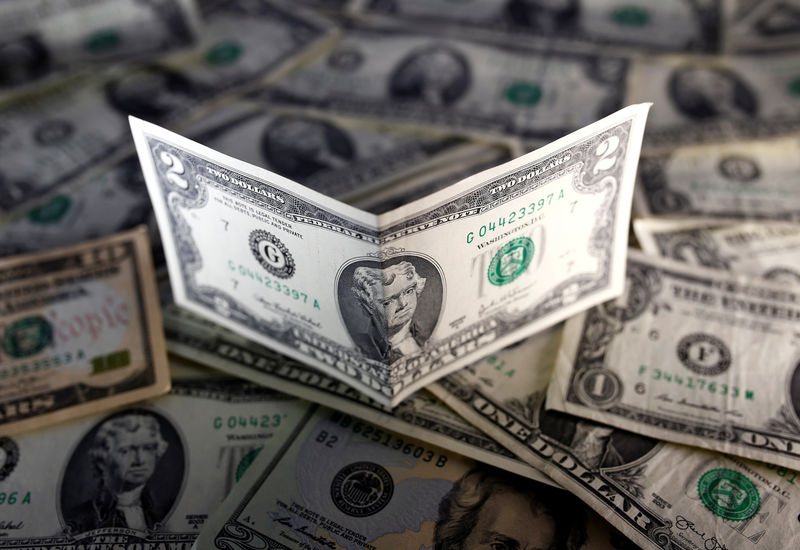Dollar Edges Higher, Lifted by Safe Haven Demand
2022.07.01 10:26

By Peter Nurse
Investing.com – The U.S. dollar edged higher in early European trade Friday, trading close to the highs of the year on safe-haven demand as central banks take on inflation at the expense of economic growth.
At 03:00 AM ET (0700 GMT), the Dollar Index, which tracks the greenback against a basket of six other currencies, traded 0.2% higher at 104.688, after climbing to a 20-year high of 105.79 in mid-June.
The dollar saw some weakness Thursday after U.S. consumer spending grew far less than expected in May, prompting benchmark 10-year Treasury yields to fall as low as 2.94%, set for their biggest weekly drop in seven weeks.
This followed comments from Fed Chair Jerome Powell earlier in the week suggesting that the risk of harm to the economy from higher rates was less important than restoring price stability.
That said, the dollar has quickly bounced back with investors dumping growth-sensitive assets as concerns mount that any slowdown in the U.S. would drag the world along with it.
“The dollar remains close to the highs of the year as recessionary fears fail to dent the central assumption that inflation is a problem and that the Federal Reserve is laser-focused on taking rates higher to address it,” said analysts at ING, in a note.
EUR/USD fell 0.3% to 1.0453, with the war between Russia and Ukraine adding to inflation and growth worries in Europe.
European economies are facing a major new shock from slowing deliveries of Russian natural gas, which threaten to push inflation even higher than the current record levels and drive the continent’s powerhouse Germany into “imminent” recession, Deutsche Bank said.
Eurozone consumer price data will be in focus later Friday, with the annual CPI figure expected to climb to 8.4% in June, a new record after it reached 8.1% the previous month.
Additionally, manufacturing PMI data for the Eurozone, and especially Germany, are also due Friday and are expected to show deteriorating confidence in this key sector.
GBP/USD fell 0.4% to 1.2131, with Bank of England governor Andrew Bailey noting earlier in the week that the U.K economy was starting to slow while inflation is expected to continue to climb.
U.K. business executives are the most gloomy on their outlook for the economy since the early days of the pandemic. The Institute of Directors’ survey of more than 400 leaders showed a measure of economic confidence fell to minus 60 in June, down from minus 45 in April and the lowest since the coronavirus first hit the U.K. in early 2020.
USD/JPY fell 0.6% to 134.97, with the Japanese yen also receiving support as a safe haven. The risk-sensitive AUD/USD slumped 1.1% to 0.6821, while USD/CNY rose 0.1% to 6.7078 after China’s manufacturing activity expanded at its fastest in 13 months in June, with the Caixin/Markit manufacturing purchasing managers’ index rising to 51.7 in June, boosted by the lifting of COVID lockdowns.








